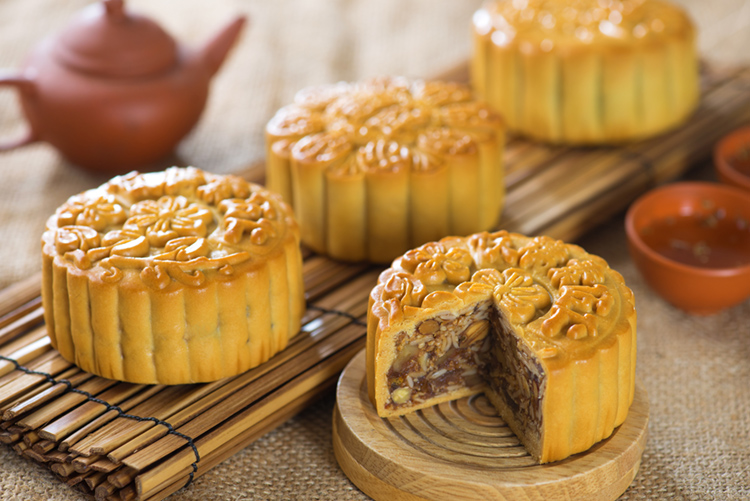Today, October 4, people in Asia and other places celebrate a holiday known as the Moon Festival, also known as the Mid-Autumn Festival. The holiday is one of three major festivals on the Chinese calendar. The other two are the Chinese New Year, also called the Lunar New Year, and the Dragon Boat Festival. The Moon Festival is also celebrated in Korea, Japan, Taiwan, and Vietnam, and worldwide by people with heritage in these countries. The festival takes place around the September equinox, the date of equal day and night that marks the end of summer and beginning of fall in the Northern Hemisphere. In the Chinese lunar calendar, based on cycles of the moon, the seventh, eighth, and ninth moons make up the autumn season. The Mid-Autumn Festival falls on the 15th day of the eighth moon. On this day, a full moon marks the midpoint of the season. Because this year’s festival falls near China’s National Day (October 1), the holiday celebration there (which usually runs three days) runs a full week from October 1 to October 8. National Day commemorates the founding of the People’s Republic of China in 1949.
The origins of the Mid-Autumn Festival are interwoven with Chinese myths and legends. The festival is often associated with romance. According to Chinese philosophy, there are two principal forces of nature, called yin and yang. The moon embodies yin, which is associated with feminine qualities and with darkness. Thus, the Mid-Autumn Festival or Moon Festival is a women’s festival and is celebrated at night. Traditional Chinese poets sing of the beauty of the Moon Goddess or bemoan her loneliness on the moon. According to folklore, young women can make their wishes known to the “old man in the moon,” hoping that he will assist them in finding a suitable marriage partner.

People eat special pastries called moon cakes during the Moon Festival. The origin of the moon cake is unknown. The cakes are first mentioned in texts that date to the Tang dynasty, from A.D. 618 to 907. The cakes are baked into round shapes to resemble the full moon. They are usually filled with bean, lotus seed, or almond paste or dried fruits and nuts. The cakes often include a golden egg yoke in the middle to represent the moon. Families celebrate the festival with a shared meal and moon cakes. They then view the full moon together at night and recount tales related to the moon. In imperial China, the emperor viewed the mid-Autumn moon from a special palace.
During the festival, many people try to see the image of a rabbit that is said to be visible on the moon. According to a popular tale, the god Sakra disguised himself as a Brahman (priest) and announced to a group of forest animals that he was hungry. When the animals heard his cry, they brought him their food and begged him to accept their hospitality. The rabbit, however, who was an incarnation of the Buddha, said that he ate only grass and had nothing worthwhile to offer but his body. The rabbit then leapt into a nearby fire to complete the offering. Before doing so, he shook himself to remove the insects in his fur, explaining that he had no right to take their lives. Sakra revealed himself and praised the rabbit for his self-sacrifice and compassion. He placed the rabbit’s image on the moon to serve as a shining example for all. This popular story has been adopted in the Chinese Taoist (also called Daoist) tradition, where the main character is known as the Jade Rabbit.
Untitled Document
Can't view the linked articles? Subscribe to World Book Online

World Book Online delivers a progressive sequence of core databases supported by supplemental
tools, such as language translation, graphic organizers, and unique Webquests. Moving from
Early World of Learning to World Book Advanced, World Book Online aligns end-users with their
appropriate learning levels. Each stand-alone site provides additional features to support the
needs of users’ specific capabilities.
The World Book Difference
World Book combines cutting-edge technology with traditional editorial excellence to produce
authoritative, trustworthy, and unbiased content. The digital content is updated in real time and
carefully curated for each learning level. Accessible 24/7, the content is available on a variety of devices.
World Book Online combines 21st-century instructional techniques with timely information.
By breaking down complex topics and using easily understandable text, World Book Online helps to
build fluency and increase comprehension. Featuring single sign-on capability, these sites are paired
with highly visual content to engage even the most reluctant reader. Our collection of resources kindles
a lifelong learning experience for every user. This adherence to clarity, currency, and accuracy makes
World Book’s digital offerings an information hub for the classroom, library, and beyond.
Image 1: Oversized traditional Chinese lanterns illuminate the waterfront of Hong Kong, China, during the annual Moon Festival (also known as the Mid-Autumn Festival). Credit: © Lee Yiu Tung, Shutterstock
Image 2: Delicious moon cakes are traditionally served during the Moon Festival (also called the Mid-Autumn Festival) in Asian countries. Credit: © Shutterstock